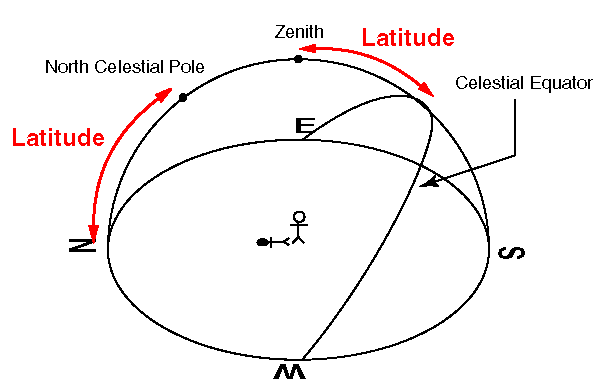

The above picture shows the situation in the northern hemisphere of Earth: the north celestial pole sits above the north point on the horizon by an angle equal to the observer's latitude, and the celestial equator crosses the meridian a bit south of zenith... in fact the angle between zenith and that crossing point is also equal to the observer's latitude.
In the southern hemisphere (i.e., the observer's latitude is negative) the north celestial pole is below the northern horizon by an angle equal to the absolute value of the observer's latitude. (Note: negative latitude; NCP below horizon). The south celestial pole will be above the southern horizon by an angle equal to the absolute value of the observer's latitude. The celestial equator crosses the meridian a bit north of zenith... in fact the angle between zenith and that crossing point is also equal to the absolute value of the observer's latitude. (Note: negative latitude; CE crosses the meridian north of zenith).